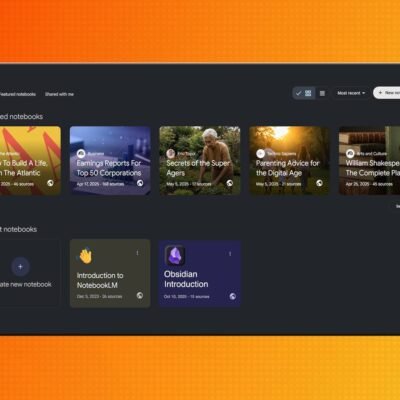
Autonomous AI agents could soon be communicating across the internet
Outflow Designs/iStockphoto/Getty Images
What does the future of the internet look like? If AI firms get their way, the once-open web could be fractured into digital silos dominated by commercial AI models, leaving hobbyists and small businesses behind. To prevent this, a team of grassroots researchers is planning to fight back and ensure an open approach to AI.
At the heart of this battle is the concept of an AI “agent”, a piece of software that browses the web and interacts with websites according to the instructions of a human user – for example, planning and booking a holiday. Many people see agents as the next evolution of services like ChatGPT, but getting them to work is proving tricky. That is because the web was built for human use, and developers are realising that AI agents need specialised protocols to better interact with online data, services and each other.
“The idea is to build infrastructure so there’s a way for software-like bots, which we call AI agents, to communicate with each other,” says Catherine Flick at the University of Staffordshire, UK.
Several competing solutions to this problem have already been developed. For example, Anthropic, the company behind the Claude chatbot, has developed the Model Context Protocol (MCP), which standardises how AI models connect to different data sources and tools. In April, Google announced its own version of such a concept, the Agent2Agent (A2A) protocol.
These approaches are slightly different. MCP standardises the way an AI model plugs into external data stores and tools, giving assistants a secure, universal channel for two-way connections – think of it like being able to send someone a message when you know their phone number or email address. A2A goes one step further, allowing autonomous agents to discover one another, exchange information and coordinate tasks – a bit like being in a group chat.
MCP could, for instance, be used to connect an AI chatbot to the code-sharing site GitHub, while Google says A2A could be used to source candidates for job interviews, schedule calls with them and run background checks, all in one process, with a team of agents running concurrently.
But because these protocols are coming out of big tech labs, there are concerns that the inventors of the winning protocol could exert their influence to benefit their business, rather than the greater good. MCP requires a central server to oversee connections, while A2A is built around the assumption of a catalogue of approved agents working together, rather than a free-for-all.
“We don’t want the ‘agent internet’ to become another ‘data silo alliance’,” says Gaowei Chang. He chairs the AI Agent Protocol Group, which was established in May as part of the World Wide Web Consortium (W3C) standards organisation, and says it is essential that all voices are heard in developing this new layer of the internet. “If we truly believe AI is an important technology that will change human society, then we need an open, neutral community to drive protocol design, ensuring its future belongs to everyone, not just a few companies,” he says.
Chang has initiated his own open-source competitor to the big tech agent protocols, the Agent Network Protocol (ANP), which predates both MCP and A2A. ANP ensures that any AI agent can discover any other and identify itself through the web, a bit like the old days of the internet where people would set up personal websites and email addresses without having to be mediated through a big tech firm. This would allow ANP-powered models to work without a central authority, enabling, for example, two different AI models to communicate on your own device without needing to access the internet for approval.
Flick welcomes the development of open-source and non-industry-led alternative protocols for agentic AI. “It’s basically trying to bring back some essence of democratisation to the internet, which is how the internet started,” she says. She fears that without this alternative, tech companies will throw up “walled gardens” of the type that have plagued other key technologies, like app stores or social media networks. “If we were to wait for the big companies to do this, they would do it in such a way that would extract as much profit to them as possible,” she says.
Google and Anthropic say their protocols aim to benefit everyone. “We continuously enhance [A2A] to address the real-world challenges that businesses face when deploying agentic platforms. Put simply, it is built for future scale,” says Rao Surapaneni at Google Cloud.
“We’ve always believed that AI advances should benefit everyone,” says Theo Chu at Anthropic. “When we developed MCP, we made it open source because we knew this would be one of the key ways to prevent the fragmentation and vendor lock-in that have plagued other technology transitions.”
Chu points out that Microsoft, OpenAI and even Google are integrating MCP across their platforms. “MCP succeeds precisely because it increases choice rather than limiting it,” she says. “Every implementation makes the ecosystem more valuable for everyone.”
The W3C group hopes to collaborate with all players to develop industry-wide technical standards, says Chang, but there is no set timeline for this to happen. “Ultimately, what we care about is the healthy development of the entire agent ecosystem, not the victory or defeat of any specific protocol.”
Topics:





